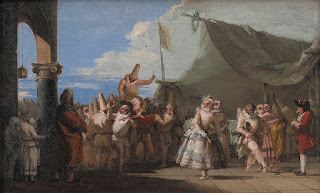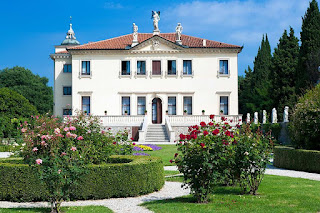Guido Deiro - vaudeville star
Accordion player who wowed America
The musician Guido Deiro, who was the first artist to become a star playing the piano-accordion, was born on this day in 1886 in an Alpine village north of Turin. For a while, in the early part of the 20th century, he and his brother Pietro were among the highest-paid performers on the booming American vaudeville circuit. Using his stage name, which was simply ‘Deiro’, he made more than 110 recordings, which sold in large numbers. He ‘covered’ many popular hits and well known classical and operatic pieces and wrote compositions of his own, the most famous of them the song Kismet, which became the theme song for the Broadway musical and was used in two film versions of the story, which was based on a play by Edward Knoblauch. Deiro became something of a celebrity and was seldom short of glamorous female company. He was married four times, on the first occasion to his fellow vaudeville star Mae West, who would go on to become much more famous as a movie actress. He was born Count Guido Pietro Deiro in the village of Salto Canavese, near Courgnè, about 45km (28m) north of Turin. His family were long-standing rural nobility. Read more…
______________________________________
Vittorio Gassman - actor
Stage and screen star once dubbed ‘Italy’s Olivier’
Vittorio Gassman, who is regarded as one of the finest actors in the history of Italian theatre and cinema, was born on this day in 1922 in Genoa. Tall, dark and handsome in a way that made him a Hollywood producer’s dream, Gassman appeared in almost 150 movies but he was no mere matinée idol. A highly respected stage actor, he possessed a mellifluous speaking voice, a magisterial presence and such range and versatility in his acting talent that the Hollywood columnist Sheilah Graham once called him ‘the Lawrence Olivier of Italy’. He enjoyed a career that spanned five decades. Inevitably, he is best remembered for his screen roles, although by the time he made his movie debut in 1945, he had appeared in more than 40 productions of classic plays by Shakespeare, Aeschylus, Ibsen, Tennessee Williams, and others. On screen, his major successes included his portrayal of the handsome scoundrel Walter opposite Silvana Mangano in Giuseppe De Santis's neorealist melodrama Riso amaro (Bitter Rice, 1948), and several commedia all’italiana classics, including Mario Monicelli’s I soliti ignoti (released in the US as Big Deal On Madonna Street, 1958). Read more…
________________________________________
Tullio Serafin – opera conductor
Toscanini’s successor furthered the career of Callas
The man who helped Maria Callas develop her singing talent, musician and conductor Tullio Serafin, was born on this day in 1878 in Rottanova near Cavarzere in the Veneto, on the Adige river just south of the Venetian Lagoon. Serafin studied music in Milan and went on to play the viola in the orchestra at Teatro alla Scala under the baton of Arturo Toscanini. He was later appointed assistant conductor and then took over as musical director at the theatre when Toscanini left to go to New York. Serafin conducted at La Scala between 1909 and 1914, from 1917 to 1918 and then returned briefly at the end of the Second World War. He became a conductor at the Metropolitan Opera in New York in 1924 and stayed with them for ten years before returning to Italy to become artistic director at the Teatro Reale in Rome. During his career he helped the development of many singers, including Rosa Ponselle, Magda Olivero and Joan Sutherland. Serafin’s most notable success was with Maria Callas, with whom he collaborated on many recordings. He is credited with helping the American-born singer achieve a major breakthrough in 1949. Read more…





.jpg)
.jpg)

_-_VIA_CRUCIS_II_-_Jesus_carries_his_cross_by_Giandomenico_Tiepolo%20(1).jpg)
.jpg)

.jpg)

_-_VIA_CRUCIS_II_-_Jesus_carries_his_cross_by_Giandomenico_Tiepolo.jpg)

